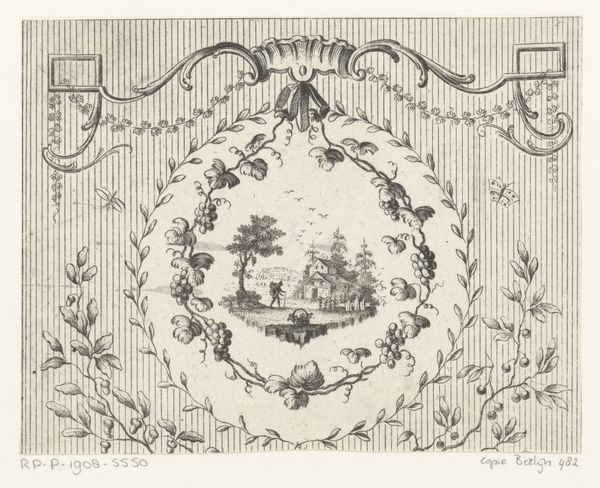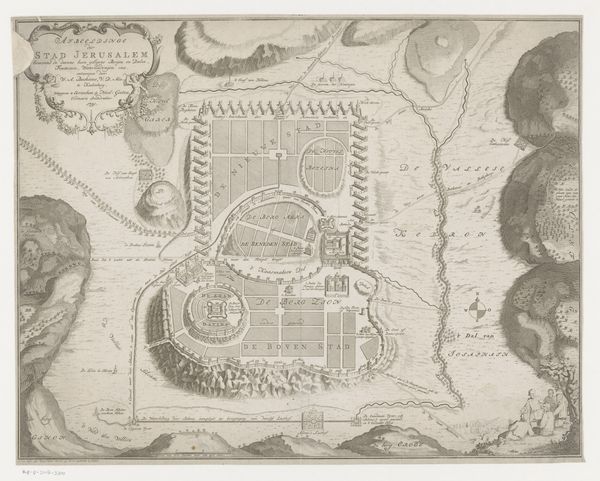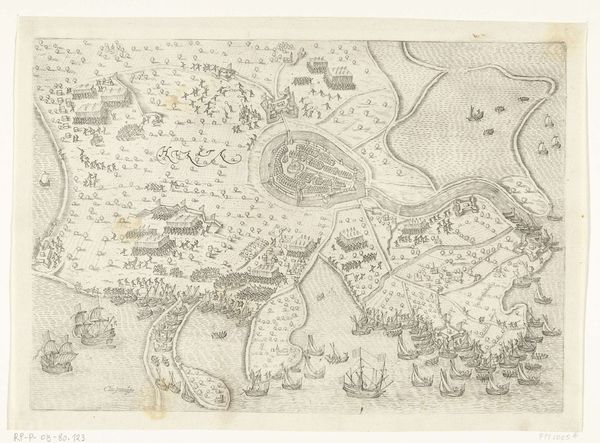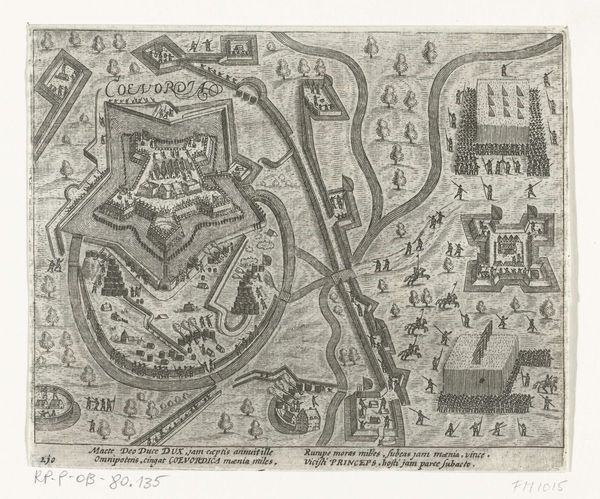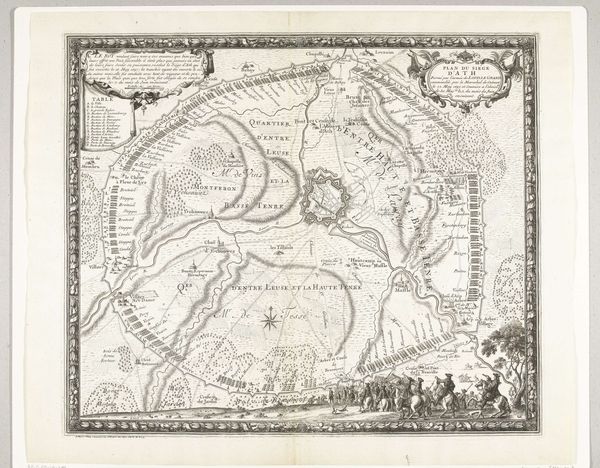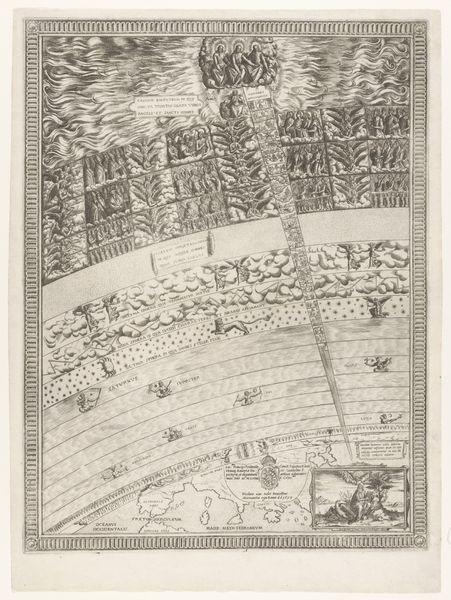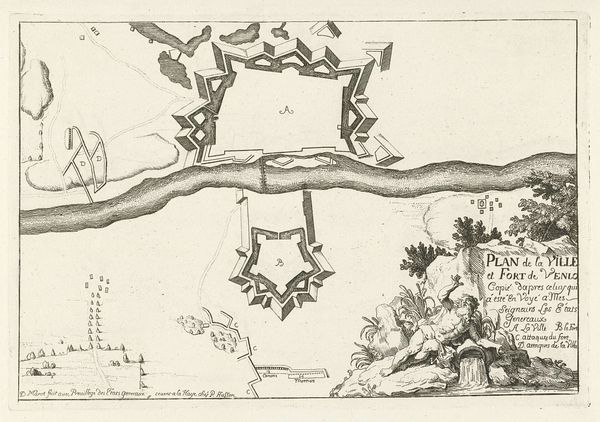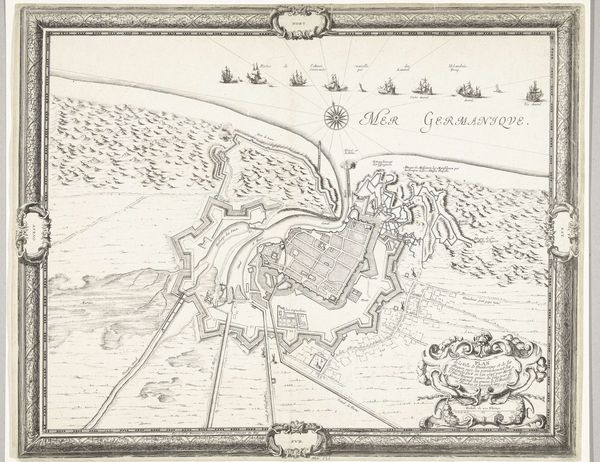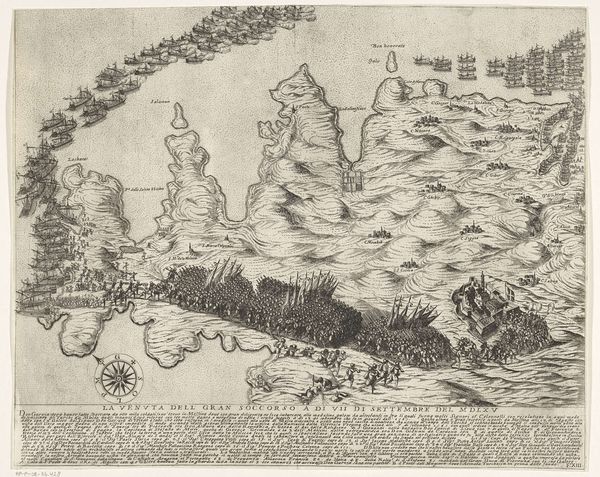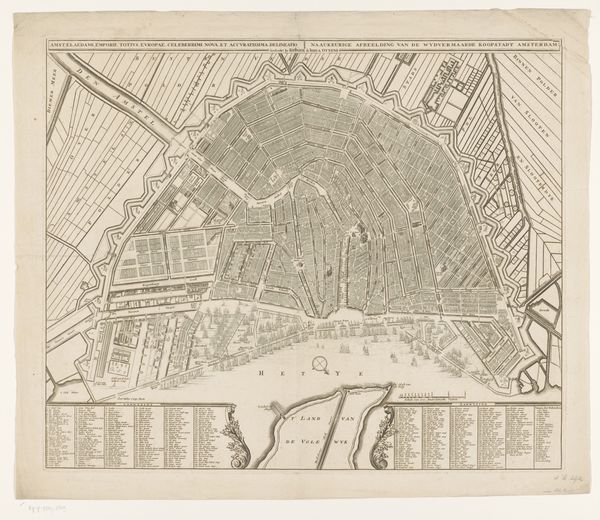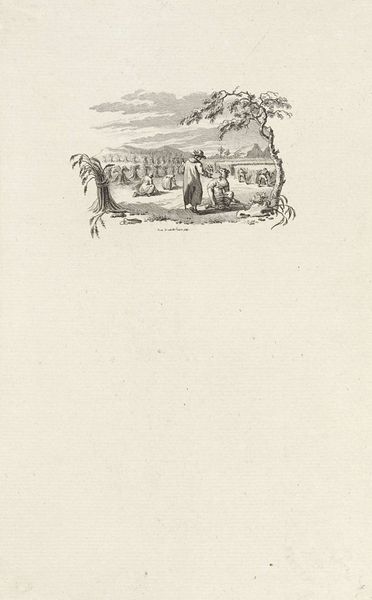
drawing, graphic-art, print, etching, ink, engraving
#
drawing
#
graphic-art
#
narrative-art
# print
#
pen illustration
#
pen sketch
#
etching
#
old engraving style
#
figuration
#
personal sketchbook
#
ink
#
sketchwork
#
ink drawing experimentation
#
pen-ink sketch
#
line
#
pen work
#
sketchbook drawing
#
history-painting
#
academic-art
#
sketchbook art
#
engraving
Dimensions: height 201 mm, width 233 mm
Copyright: Rijks Museum: Open Domain
Curator: Looking at this etching dating from 1842 to 1869, titled "Menigte bij een gebouw" or "Crowd by a Building", created by Huibert Gerard Brian Nahuys, I am immediately drawn to its intricate, almost dreamlike quality. What are your initial impressions? Editor: It feels like a fragile, ghostly memory, a pen sketch quickly jotted down in a personal sketchbook perhaps. The lightness of the etching, the almost skeletal structure of the figures, contributes to that effect. The details emerge slowly, like teasing out a narrative from mist. Curator: Absolutely. As a history painting of sorts, the work may allude to societal celebrations, while perhaps embedding it in the public's growing consciousness around national identity during this period, since the author uses old engraving style, Editor: Yes, the framing with "Vivat et Crescat" and "IEUW BATAVIE IEUW" certainly pushes the concept of nationalism as well as a desire to "flourish". Do you believe the artist had a precise meaning they intended to represent, or rather more a feeling? Curator: I suspect there may have been an intentional propagandistic aim. Images were deployed deliberately in this era to create visual cues of patriotism, as nascent political identities were in the process of solidifying. Editor: The way the artist uses line and shadow, almost playfully, draws the eye around the image, delaying any fixed interpretation. The swags and decorative elements create an ambivalent, ironic undertone which complicate any straightforward "message" it seems. Curator: The technique really reinforces this reading. The delicate lines might express some anxiety that would otherwise run afoul of the authorities, for instance. This speaks to the power of printmaking during periods of sociopolitical change. Editor: A certain delicacy in those details certainly undermines a purely bombastic claim. Thank you. Curator: It highlights how context helps appreciate technical achievements, even from seemingly minor artworks such as these.
Comments
No comments
Be the first to comment and join the conversation on the ultimate creative platform.
